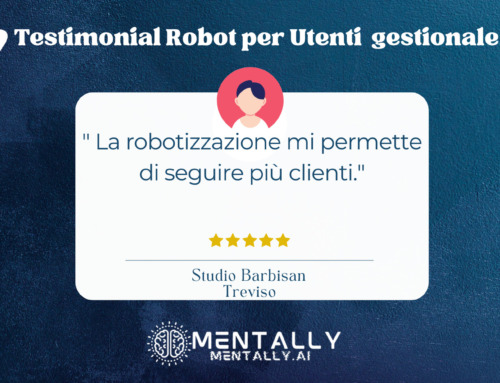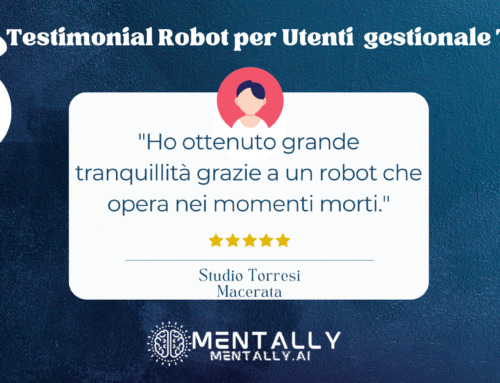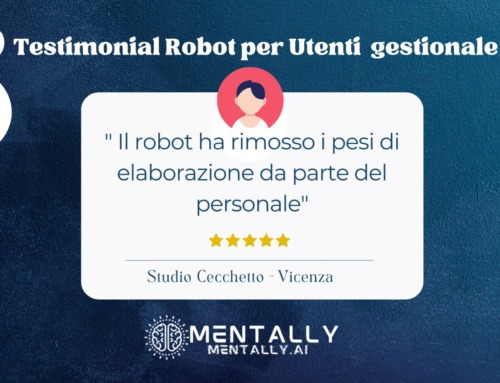In this video we analyze three popular online courses for artificial intelligence. Namely the MIT “Artificial Intelligence: Implications for strategy”, the Berkeley “Artificial Intelligence Online program” and the Innodemia “A.I. Product and Process Innovation” Online Course.
The the programs are compared for different dimensions. The in class experience and the teaching method, social opportunities, the content and the goal of each course, the potential outcomes, how each course may fit the needs of different type of professionals. These are our views based on research and interviews we conducted. Our interviews maybe biased in ways that we could determine.
Here is our video:
As a courtesy here is a machine learning generated transcript of the video. This transcript was generated using the software from the company otter.ai. The transcript is as it is and has not been corrected from machine speech to text potential errors.
you can also check our A.I. product and process course HERE
Automated Transcription
The difference between the MIT online class, the Berkeley University of Berkeley Business School, online class and my, my course and so among each other. So at high level, the first thing that we’re going to talk about is the structure of these courses.
The two courses from the universities and the structure of the university courses. So they start the second time, there are deliverables every week, and you had to be you had to meet on time.
So those are the same structure. And both of them have a social component to it kind of an entertaining component where they allow you to make friends basically, in the class.
Some people are attracted to these courses. So because they think they’re gonna make some professional connection. My research indicates that that is not as valuable as it seems.
At the begin it’s more of a kind of a France type of thing. The few minutes It’s more social like you’re like in a real class. So my class is more like do it on your own time. And I have chosen that. That approach because I know a lot of people do not have enough time. And then they get scared by this timing issue. Some other people like it, because it keeps them on track.
But I think in the large numbers, and I have also taken a lot, of course, I’m a person that was thinking bottom line for some but more than $10,000, especially on the marketing side, and I’ve invested more than $400,000 on the artificial intelligence side, but at least I would say 10 to $15,000 on the marketing side and $400,000 on the on the AI where it’s not like courses, it’s more like, you know, doing stuff like really adding engineers and data scientists and so on my course, so it’s more on, take it yourself, but right now, my course is going in different directions.
So I’m learning personalisation. So Meaning, if you have a specific use case, I want to address it.
I want to see how we can find a way to address your specific use case. So at this point, what I’m doing is I select if somebody has interesting use cases, I select them, and then I address them in one single class over the time what we will do with the personalization, I’ve seen it working in other online classes that I personally like a lot is like every two weeks there is the use case analysis where the students say a couple of students, they come up with an in depth problem Luckily, they fill up you know, they have to record the video they fill up the formula with a lot of questions is really like something demanding because I spend the time to fill up and then I address this couple of hours every every two weeks. I like that more than more. It’s not available right now.
What I do right now is it’s more like if somebody asks a very good use case I produce a couple of hours, one hour couple of hours of classes when they really, have something that, you know, it’s really important for everybody to, to learn, then the other direction where I might go into future.
But of course, it’s not possible at the price point where I am right now today, it would be the the direction of learning by doing and then internship, basically, in Silicon Valley, kind of a remote internship you do with 20 hours or 40 hours project that requires a price point higher than what it is today.
Because, you know, it’s sort of organizational things to people that needs to be hired and so on. But that’s kind of more of my vision. We’re not doing those things today. But that’s my vision.
So now let’s look at the MIT course I have interviewed 3000 people in this course. And there are at least 30 people that have taken that course that are in my school right now. So I know quite a bit about about it.
I would say this, that if you look at the type of people that take those courses, a good 45 to 50% of people that are in the real of sales, you know, lots of the finance There are lots of positions but it’s it’s they’re real, a good 10 to 15% of people that are in this strategy consulting, you know, people like McKinsey, this type of thing. And then we have a three to 5% Problem Management is not very, in my opinion is over indicated for Problem Management as a course. And then three to 5% ai engineers kind of kind of enterpreneurs and then 20% you’d really find lots of things like everything like people that like academia people that are, you know, that they’re marketing, people that are doing all course, all sorts of things. Okay.
What they tell me that is good about this course. So usually what I get is a socialist penis is pretty valued. The brand name like the father, people can get this brand. I think personally, the brand name is more a personal achievement thing, then it is a job thing. I don’t think that if you get a course online from MIT Have this price point, you know, it changes your career.
But I think that people feel that I mean, they have achieved a degree from MIT and they it’s like more like buying a Ferrari You know, when you buy a Ferrari and you say, Oh wow, I made it big intrapreneur or I buy Gucci, and I think it’s more like that. And so and then the other thing that people like about it is, is also the fact that this timing, you know, the timing, because some people you know, some people that are working, they cannot keep scheduling and they give up within the family and these type of things.
You know, the one thing I’ll always hear about it is a lot of material can be found on the internet. Now I have less knowledge about but but let me tell you what I think $2,000 $2,200 I think it’s a little bit too much for what, for what is given. The other one here is the Berkeley course this I had to tell you a couple of things. First of all, when it came out, it was $3,200 to Now that lowered the price to 2100.
To me, this is a little bit more interesting. I know it’s a little bit less, but Well, I think this one us is because it’s California probably as more visibility into what I’m saying that we need, like business, a technical and more tactical kind of skills that these courses should teach.
This is a little bit more, it’s more focused around strategy. So it’s one single thing and I think that’s good. You know, if you had to invest 1000 hundred dollars, I think I would, I’d rather like focus on one single thing rather than doing, you know, too many things like the MIT one a seems to me more like an entertaining type of thing. Now, the other thing that I see here, it’s really this part on what are called the KPIs. I think this is a good thing that they have. You find it in my course too.
It’s very sophisticated in my course, I define the KPI seven multiple levels of organization because really, a lot of the value in artificial intelligence is how you can connect the crazy mad scientist that has his own KPIs or key performance indicators, KPIs, key performance indicators, with the business objectives, and there are lots of things in between like a donation and Todd chapters get to that in my course. And I think the further they have it, it indicates, in my opinion that this one is good.
I’m a little biased towards California Silicon Valley. So this one sounds a little bit more of Silicon Valley, I still have a perception that is a little bit higher level. So now let’s come to my course is more kind of filling the gap between somebody who is really on the technology, the data scientist and somebody who is really, really, really high level strategy.
I do address a lot of topics that have to do like what do I build? How do I make money? How does a company goes in a certain way? Rather than another one, but I tend to start that to that, and then going into how to implement that from a product from a process.
And I’ll let me tell you progress means a lot of things. So most companies do not produce product like most of the application of artificial intelligence is not, you know, creating a intelligent mouths.
It’s not that the most of the applications artificial intelligence is finding a better way to ship for example, products, we need to ship goods within the same company or to improve the way that documents moves in the same company and so on. That’s where the vast majority of artificial intelligence applications are.
That’s the processes and I talked about this thing. So I think the easiest way I was thinking bioswales The easiest way is giving you some cases. I think the people that get attracted to my course and really the cases that we have our product manager or people are aspiring like engineers that wants to product managers, they want to go into really more like an Ai product, they want to go into hyper the management that pays a little bit more, then we have engineers that either they’re not indicated in AI or they are doing some jobs and kind of functions a little bit more on the management side.
And so they like my course to that that is the type of profile that we get, then we get the tech entrepreneur quite a bit, somebody that is trying to you know, improve their company in and really wants to think through how can I improve my company?
How can I get the mindset to improve my company, so that’s the type of person then we have a we have that type of person that is somebody who wants to learn, okay, so the, the person who wants to learn that doesn’t have much time so like they, they can invest, you know, 40 hours, 50 hours they don’t want to have on the timing. That’s the reason why I don’t do it and the timing because I know that the people like this as well.
I have a lot of testimonials on my website. I want to remind them really briefly really briefly software simple see He was a normal Product Manager, she has an engineering background, she was well was a normal product manager does not have an MBA. And she took my course then she did an interview and got a job as a product manager at Walmart labs.
Pedro is one of the people has taken the MIT course first, and basically didn’t help him too much like he was to a level for him. And he was trying to basically get $3 million for an investment in his company and what he wanted to do, he was in our automated industrial process.
And basically, in my course, I don’t solve this problem. I don’t create his industrial process, but I teach him how he can think about creating it and I teach him basically when he does the proposal to get the $3 million. What are the important things like what are the cost factors then then really, they got impact.
And if you like in this, I see a little bit of overlap with the with the Berkeley course that’s that’s that’s why I like More than merch because over over the MIT and then we have a you know, we have a lot of more cases I had to conclude this year because otherwise too long, but my point is my course is more for doers.
Okay, it’s not just, you know, I sit there and I get an experience and entertaining SPS, this is for people that, you know, within a short amount of time once get started, and then they’re planning to, you know, over the time to get bigger on it, like, again, you know, make a career if they’re working for somebody else, or, you know, they’re doing for example,
Mark is another guy that he has a small engineering company, and he’s doing you know, for other companies just developing software, anyone go in artificial intelligence, of course, he took the technical courses, but you know, when you go with the customer, you have to them you have to picture them like I’m doing with you a vision, so what are you gonna be tomorrow and he had to build a business solution. So he got it for this reasons. So for the reasons that He needs to plan.
What is that? You know, the end to end solutions, like hiring people, what type of people? What it causes me what projects are hard to put together? How do I think about, you know, measuring the results of what I’m doing? Because if I’m dealing with the customer, I have to deliver some results and how do I’m going to our market to communicate to them.
So that’s for example, that’s market and there is, you know, there is a gal Ingrid that it was a product manager called e commerce and she was planning to basically present a big project in in e commerce for a company but then she ended up using this to invest in companies here in Silicon Valley.
And the other many other examples of people that have taken the MIT class and then they took this because it’s more intense on the conceptual level on the practical level.
So I hope that this kind of cover will give you an overview if I had to tell you something like if you really want to spend too That $3,200 Okay, if I mean being honest, like, then, you know, get mine and the Berkeley one, I think together, you get all of the two, because you get more, you know, you get more tactical, more practical, more in depth from mine and this more or less cannot be the school a lever strategy from Berkeley with the with the big name from McGill before Berkeley.
But, I mean, that’s my feeling, but I don’t want to bias you too much. I mean, in the end it’s up to you, it is about what you’re looking for. I think the information I gave to you is you know, it’s information based on my research, you spend a lot of time looking at these things and trying to see how it works.
And I think and I hope this is for any can contribute. You’re getting to two final resolutions on on this. Thank you very much. I hope to see you in my course. Okay. Thank you. Bye.







Leave A Comment